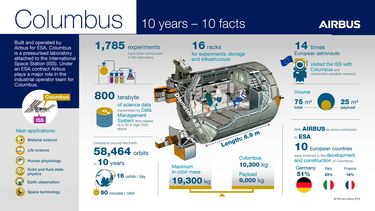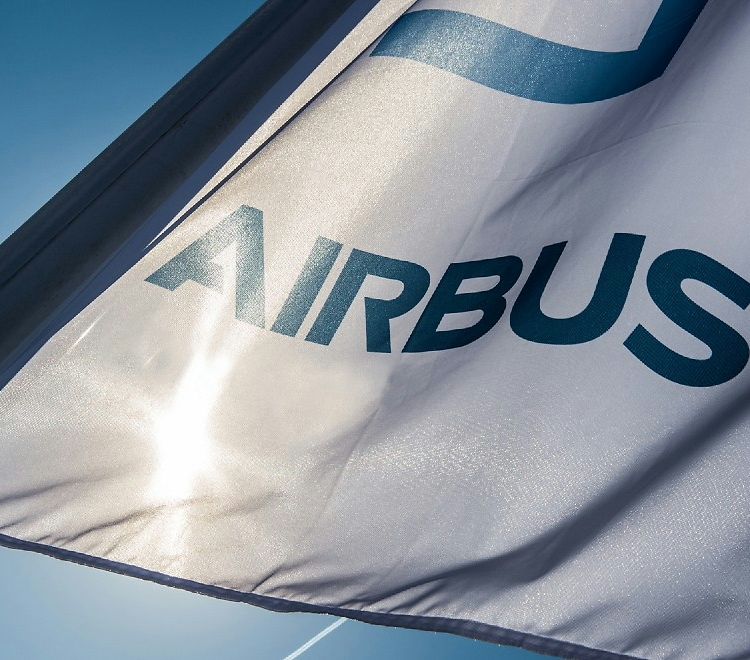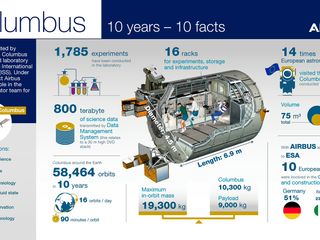The space station module underscores Airbus' European leadership in human space flight
Circling the Earth every 90 minutes since its launch in February 2008, the Airbus-built Columbus module serves as a well-equipped research environment for astronauts working aboard the International Space Station. As importantly, this 6.9-metre-long laboratory demonstrates the company’s leadership in creating and supporting European-made systems that contribute to exploration of space as the final frontier…today and for the future.
Airbus was prime contractor for Columbus, overseeing a large consortium of companies from 10 European nations to develop and build the module – also providing its life support system, and continuing to supply experiments and associated racks for operation.
Columbus marked an important milestone for Airbus, building on the company’s experience gained in developing and building the predecessor Spacelab – a laboratory that was carried 22 times in the payload bay of space shuttle orbiters beginning in 1983. Spacelab missions provided new perspectives in research and space-based industrial activities, involving cutting-edge experiments for such fields as new materials, the processing of pharmaceutical products and astronomical observation.
Impressive numbers for Columbus in orbit
While Spacelab missions were constrained by the limits of its space shuttle carriers’ flight duration in orbit, Columbus serves as a long-term laboratory, remaining attached to the International Space Station during its operational lifetime. Columbus already has logged some impressive statistics: circling the globe nearly 60,000 times; with some 1,800 experiments performed in the microgravity conditions of low Earth orbit.
Airbus’ contributions to human spaceflight also included its overall industrial responsibility for Europe’s Automated Transfer Vehicle (ATV) – a cargo spacecraft used to resupply the International Space Station. The most complex spacecraft ever developed and constructed in Europe, ATVs were launched by Ariane 5 rockets, and maneuvered using their autonomous rendezvous and docking system to meet up with the International Space Station.
A total of five Automated Transfer Vehicles were produced and deployed from 2008 to 2015, with the final ATV remaining attached to the International Space Station for more than 200 days. After performing the duties of bringing cargo such as water, food, air, fuel, clothing and hardware to the International Space Station, each of these space freighters were undocked and guided to a controlled destructive reentry in the Earth’s atmosphere.

Lunar missions…and beyond…with Orion
Looking to the future, Airbus now is applying its expertise in crewed space flight to a new adventure: the travel of humans to the Moon and beyond. The company is prime contractor for the European Service Module (ESM), which will be launched for a first uncrewed flight end of 2019 with NASA’s new Space Systems Launch vehicle.
To be located below Orion’s crew module, the European Service Module will supply power, propulsion, thermal control, water and air for future deep-space missions. The ESM is the first system-critical element to be entrusted by the U.S. NASA space agency to an international partner
Current planning calls for Orion to perform its first flight with an astronaut crew in 2022/2023 at the earliest. This will open the way for lunar missions and beyond, with the optional aim of reaching an asteroid and perhaps Mars in the 2030s – ensuring that Airbus will continue its role in exploration to probe the mysteries of space.
For additional information on the Columbus space station module’s 10 years in orbit, see the press release.

